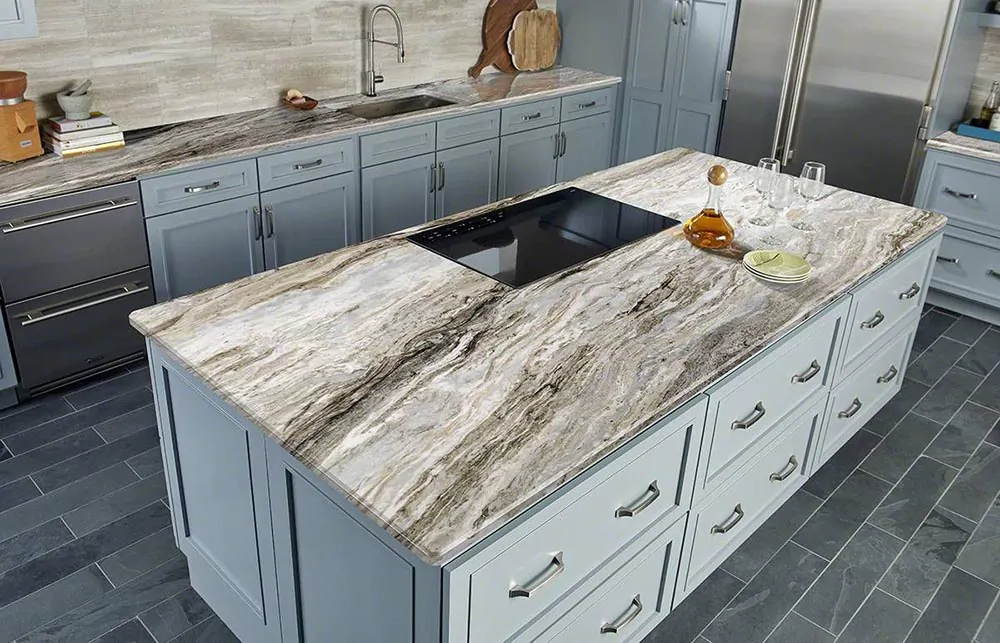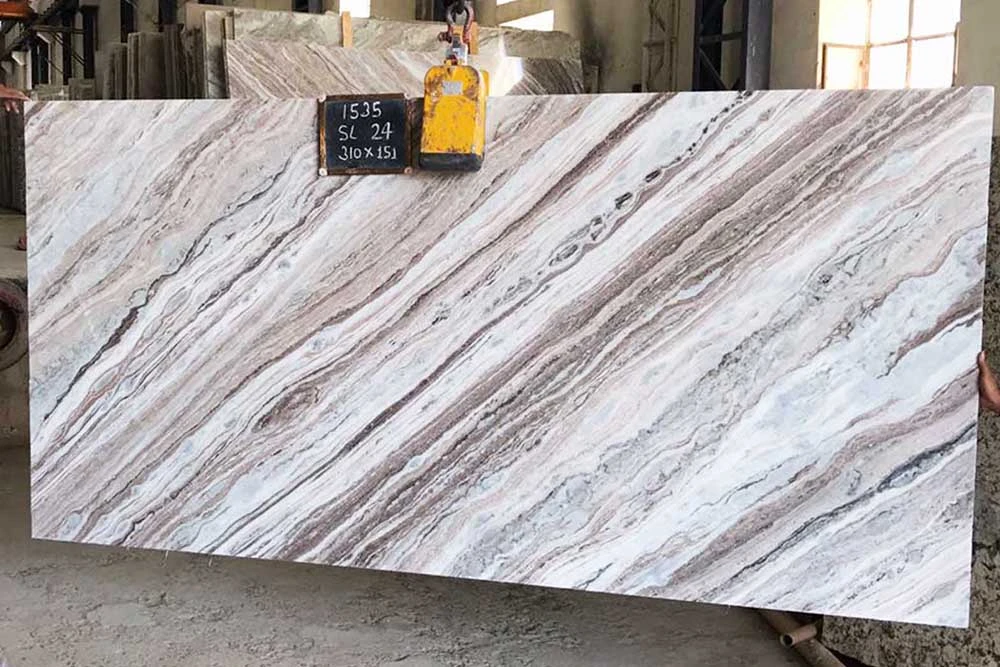In today’s times of dynamic architectural landscape, fantasy brown is a prominent name in the field of natural stones. This natural stone is distinguished by dramatic patterns in color tones of whispery white and grey, warm beige and gold, and of course, deep, earthy brown. It is a really extraordinary illustration of the majesty of Mother Nature. A vigorously organic effect, resembling a river flowing down your waterfall platform or fissured tree bark spreading across your fireplace mount, is produced by the interaction of light and dark strata.

The ongoing argument about what kind of stone Fantasy Brown is truly categorized as is the sole possible drawback. Despite the fact that some varieties of marble and quartzite might be mistaken for one another when viewed with the naked eye, marble and granite are often considerably simpler to tell apart due to their comparable hues and patterns. So why the controversy? How is it that some people classify Fantasy Brown as marble while others maintain that it belongs in the granite or quartzite category?
The answer to this question is quite intricate. The majority of common stone varieties, like marble or granite, include a wide range of various mineral compositions. Quartzite and marbles both vary greatly in terms of hardness. Therefore, a stone’s exact geological name does not always indicate how long it will survive or how well it will withstand everyday use.
Why does fantasy brown put in so much confusion?

Because of their unique color schemes, patterns, and hardness levels, it is not much difficult to distinguish between granite, marble, and quartzite. However, some of these characteristics may contradict or overlap. Therefore, from this, one cannot determine a stone from its exact geological term and how the stone will perform against the usual wear and tear.
If go by the technicalities of fantasy brown, it can be considered marble but things don’t end up here. In terms of geology, it comprises calcium carbonate, a mineral that distinguishes marble. However, due to its exceptional hardness and extremely minimal danger of etching or discoloration, marble. It operates similarly to a quartzite, in other words.
In terms of geology, it comprises calcium carbonate, a mineral that distinguishes marble. However, due to its exceptional hardness and extremely minimal danger of etching or discoloration, marble. It operates similarly like a quartzite, in other words.
Why fantasy brown is a marble?
It’s understandable why this magnificent stone is frequently mistaken for its countertop equivalents given qualities that lean toward quartzite and granite. What precisely qualifies Fantasy Brown as a marble, then? It has to do with the formation process of this magnificent metamorphic rock.
All marble is originally sedimentary limestone that undergoes metamorphism throughout time under conditions of high pressure and temperature. The limestone’s calcite is recrystallized in this process into marble, which has different types depending on the impurities present during metamorphosis (which alter color and pattern). The dolomitization process is what gives Fantasy brown, an Indian-origin stone, its harder-than-average composition.

Like marble, quartzite is a sedimentary rock, but it is formed when quartz and sandstone come together under intense heat and pressure. Granite is an igneous rock that is formed when lava cools and crystallizes under the Earth’s surface, however, it does include some quartz.
What does this all mean? In other words, it’s harder to mix up these three different kinds of natural stone if you know how they’re made. However, the typical homeowner won’t send samples of stone to a lab to determine its composition, and even many interior designers who suggest Fantasy Brown are likely to refer to it as quartzite or granite.

What’s the difference between marble and quartzite?
One of the three primary forms of rock, metamorphic stones, are both (the other two are igneous, which includes granite, and sedimentary).
When limestone is “recrystallized” by being exposed to heat, pressure, and/or chemically reactive liquids, marble takes shape. These types of stress alter the stone’s structure, leaving behind a white crystallized pattern that interlocks. Technically speaking, the swirls and hues observed in marble are impurities that happen when clay, sand, iron, and other minerals enter the metamorphosing limestone (but they have no impact on the quality of the stone in terms of use in the home).
Popular Uses of Fantasy Brown Marble
Kitchen countertops and bathroom vanities are two of Fantasy Brown’s most popular uses. But in addition, this marble may be utilized for bar tops, tub surrounds, shower walls, and more.
Are there natural cracks in this marble?
This marble often has several natural fracture lines across it. Before making your order, the marble slab should be carefully inspected, and the final arrangement should be confirmed before construction begins, according to experts.
Although it is the name given to this stone the most frequently, it is also referred to as Terra Bianca, Mascavo, and Canyon Dawn.
Lorem ipsum dolor sit amet, consectetur adipiscing elit. Ut elit tellus, luctus nec ullamcorper mattis, pulvinar dapibus leo.
The Conclusion
If you are looking to import fantasy brown marble, one wonderful option is to choose one of the marble exporters in India that are known to provide high-quality natural stones at the most competitive rates. A reliable and experienced natural stone exporter would help you in choosing the best quality fantasy brown marble for your project.



